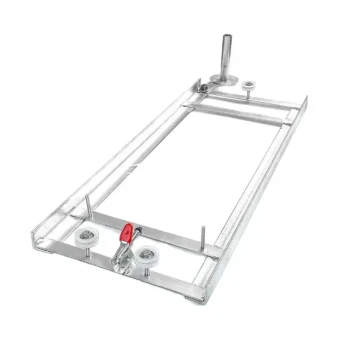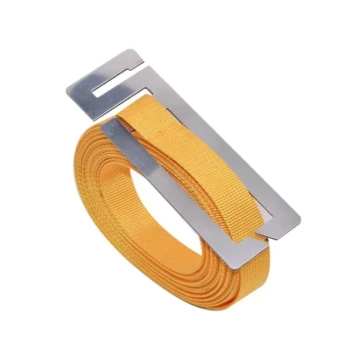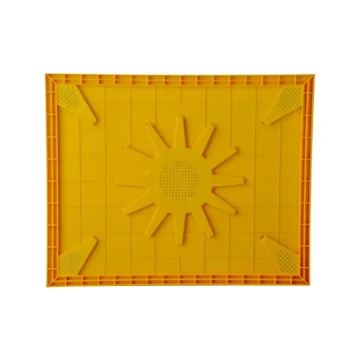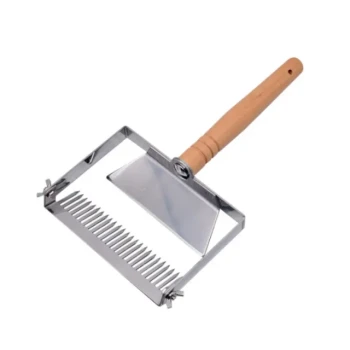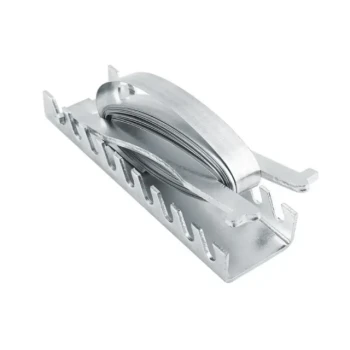The two primary types of bottom boards used in beehives are the solid bottom board and the screened bottom board. The solid board provides a traditional, insulated floor, while the screened version features a wire mesh floor that enhances ventilation and aids in pest management.
The choice between a solid and screened bottom board is a fundamental decision in modern beekeeping, balancing the hive's natural insulation against the beekeeper's need for ventilation and pest monitoring.
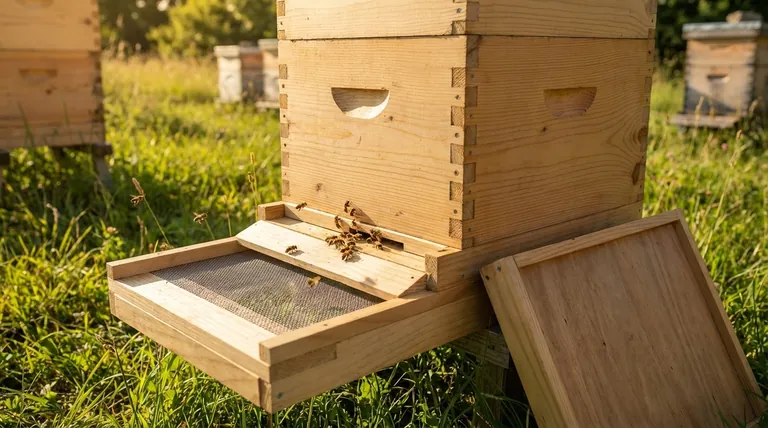
The Foundational Role of the Bottom Board
The Hive's Floor and Entrance
The bottom board serves as the floor of the entire hive structure. It is also the colony's main entrance and exit.
Foraging bees use the extended front portion of the bottom board as a takeoff and landing platform.
Protecting the Colony
The bottom board's opening is crucial for hive defense. A beekeeper can install an entrance reducer to shrink the opening, making it easier for a small or young colony to defend itself against intruders like mice or robbing bees.
It's also standard practice to tilt the entire hive slightly forward. This ensures any rainwater that gets onto the bottom board drains out instead of pooling inside the hive.
Comparing Solid vs. Screened Bottom Boards
The Solid Bottom Board: The Traditional Standard
A solid bottom board is a simple, solid piece of wood that serves as the hive floor.
This design most closely mimics the floor of a natural bee cavity, like a hollow tree. Its primary advantage is insulation, as it helps the colony retain heat, which is especially beneficial in colder climates.
The Screened Bottom Board: A Modern Tool
A screened bottom board (also called an integrated pest management or IPM board) replaces the solid floor with a section of sturdy wire mesh.
These boards typically include a removable insert, often called a "sticky board" or debris tray, that can be slid in underneath the screen.
Advantage 1: Superior Ventilation
The screen provides significantly better air circulation throughout the hive.
In hot and humid climates, this increased ventilation helps prevent the colony from overheating and reduces moisture buildup, which can promote mold and disease.
Advantage 2: Varroa Mite Management
The screened bottom board is a critical tool for managing Varroa mites, a major honey bee parasite.
As mites fall off the bees, many drop through the screen and out of the hive. By placing the sticky board insert underneath, a beekeeper can perform a mite count to assess the colony's infestation level without disturbing the bees.
Understanding the Trade-offs
Insulation vs. Airflow
The core trade-off is between heat retention and ventilation. A solid board is superior for conserving warmth during cold winters, helping the bee cluster survive.
A screened board excels at keeping the hive cool and dry during hot, humid summers, reducing stress on the colony. Many beekeepers with screened boards use the removable insert to close the bottom during winter, gaining the benefits of both designs.
Debris Removal
With a screened bottom board, hive debris and mites naturally fall out of the hive. On a solid board, the bees must expend energy to clean this debris and carry it out themselves.
Pest Monitoring
A screened bottom board provides an invaluable, non-intrusive window into the health of your colony. Without it, accurately monitoring Varroa mite levels is significantly more difficult.
Making the Right Choice for Your Hive
The ideal bottom board depends entirely on your local climate and beekeeping philosophy.
- If your primary focus is surviving cold winters: A solid bottom board offers the best insulation. Alternatively, use a screened board but ensure the solid insert is in place throughout the cold months.
- If your primary focus is proactive Varroa mite management: A screened bottom board is essential for easy and accurate mite-level monitoring.
- If your primary focus is beekeeping in a hot, humid climate: A screened bottom board will provide critical ventilation to keep your colony healthy and productive.
- If your primary focus is a simple, low-intervention setup: A solid bottom board is the more traditional choice that requires less seasonal management.
Ultimately, your choice of a bottom board directly reflects your strategy for managing your hive's environment and health.
Summary Table:
| Feature | Solid Bottom Board | Screened Bottom Board |
|---|---|---|
| Primary Advantage | Excellent insulation for cold climates | Superior ventilation & pest monitoring |
| Best For | Winter survival, traditional beekeeping | Hot/humid climates, Varroa mite management |
| Pest Monitoring | Difficult | Easy (via sticky board for mite counts) |
| Seasonal Management | Low; set and forget | Moderate; insert/remove tray seasonally |
Ready to equip your apiary with the right foundation?
Choosing the correct bottom board is a critical first step in building a healthy, productive hive. At HONESTBEE, we supply durable, high-quality solid and screened bottom boards designed for the demands of commercial beekeeping.
We partner with commercial apiaries and beekeeping equipment distributors to provide wholesale solutions that support successful hive management and pest control strategies.
Contact our expert team today to discuss your specific needs and explore our full range of beekeeping supplies and equipment.
Visual Guide
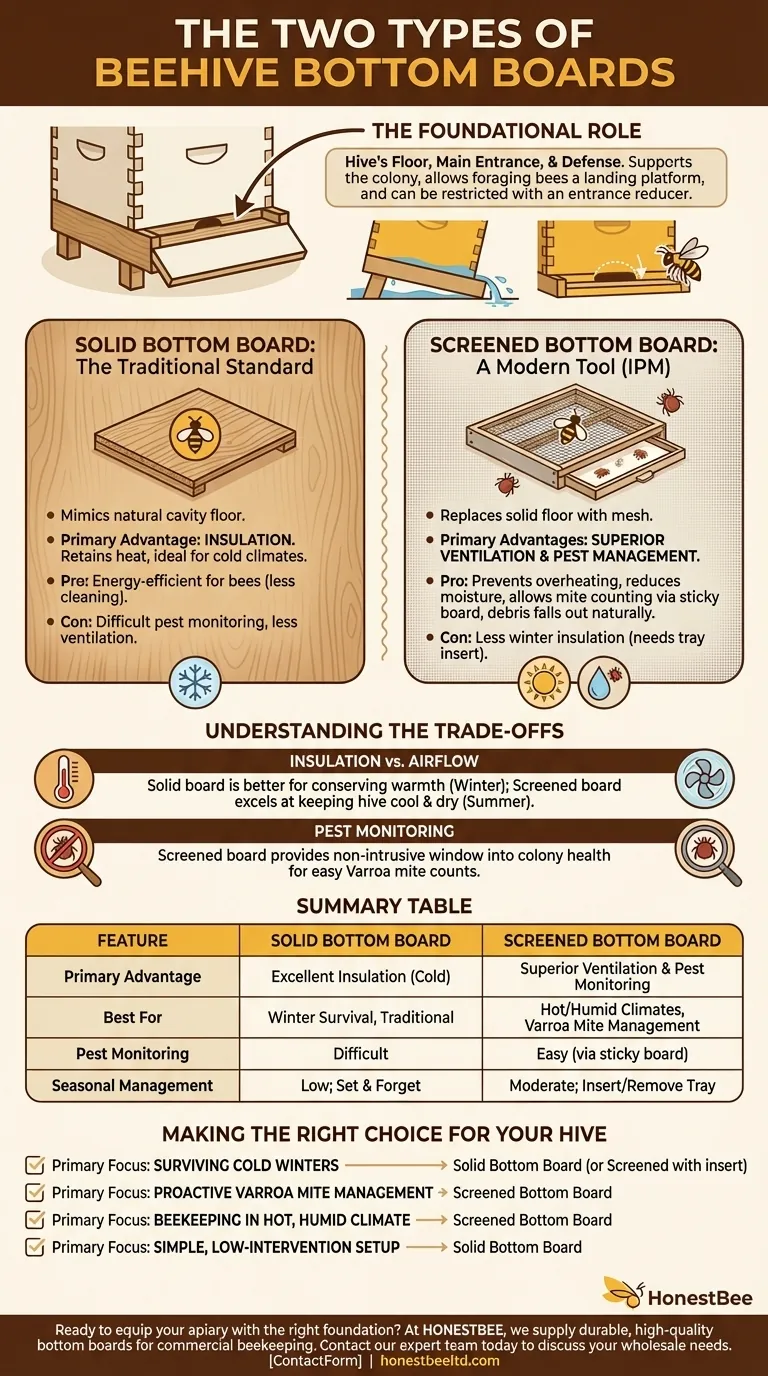
Related Products
- Langstroth Screen Bottom Board for Beekeeping Wholesale
- Australian Pine Wood Langstroth Screen Bottom Board for Wholesale
- HONESTBEE Wooden Bee Escape Board with Triangle Mesh Design for Beekeeping
- Professional Galvanized Hive Strap with Secure Locking Buckle for Beekeeping
- Boardman Entrance Bee Feeder Durable Galvanized Steel and Wood Construction for Beekeeping
People Also Ask
- What is the primary function of a screened bottom board in a hive? Enhance Ventilation & Control Varroa Mites
- What are the assembly options for the Cypress Screened Bottom Board? Ready-to-Use for Immediate Hive Health
- How does a screened bottom board assist with temperature control and pest management? A Key Tool for Modern Beekeeping
- What are some considerations when choosing between solid and screened bottom boards? Optimize Hive Health & Pest Control
- What are the benefits of using a screened bottom board for beehives? Improve Ventilation & Mite Control






